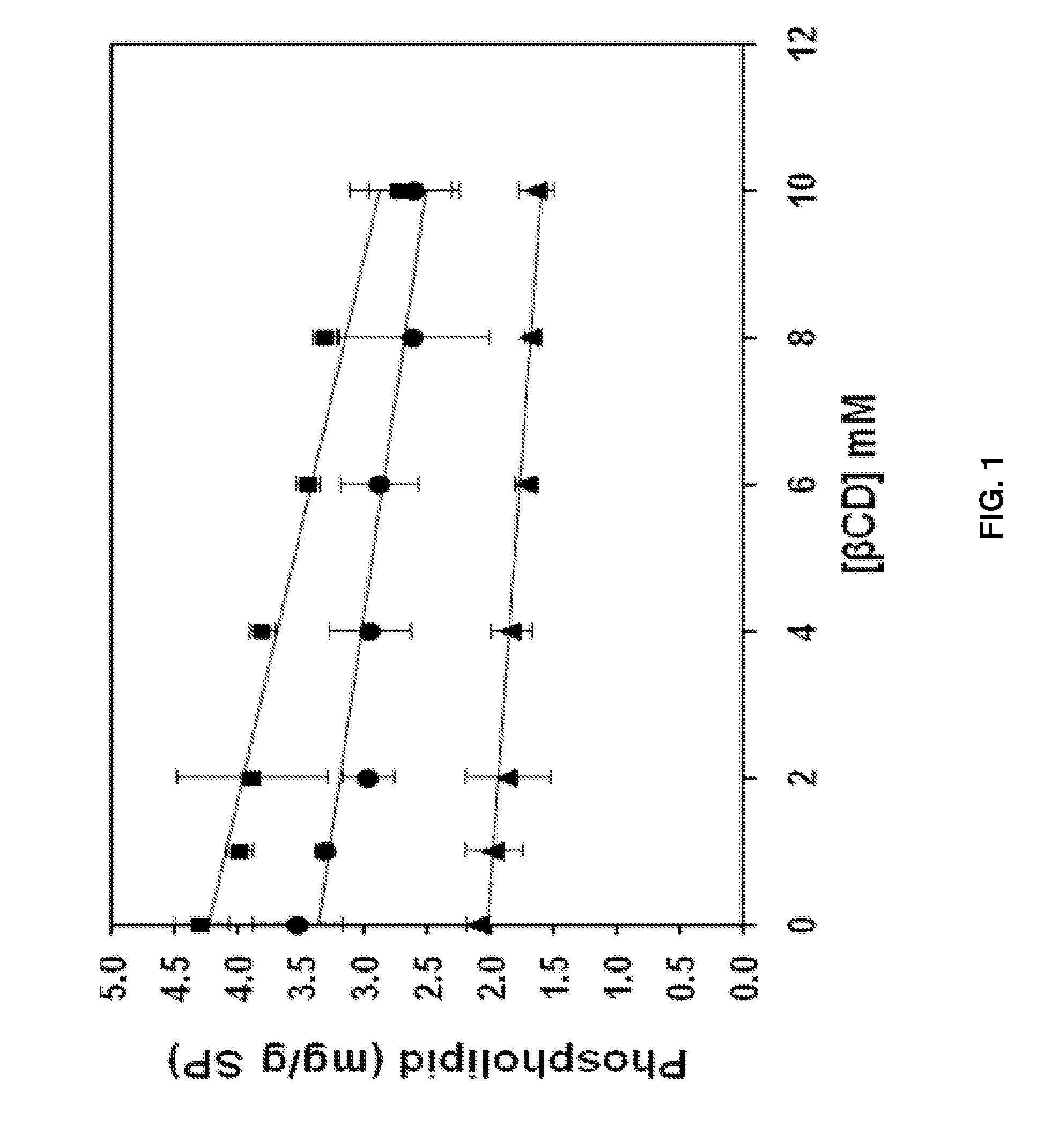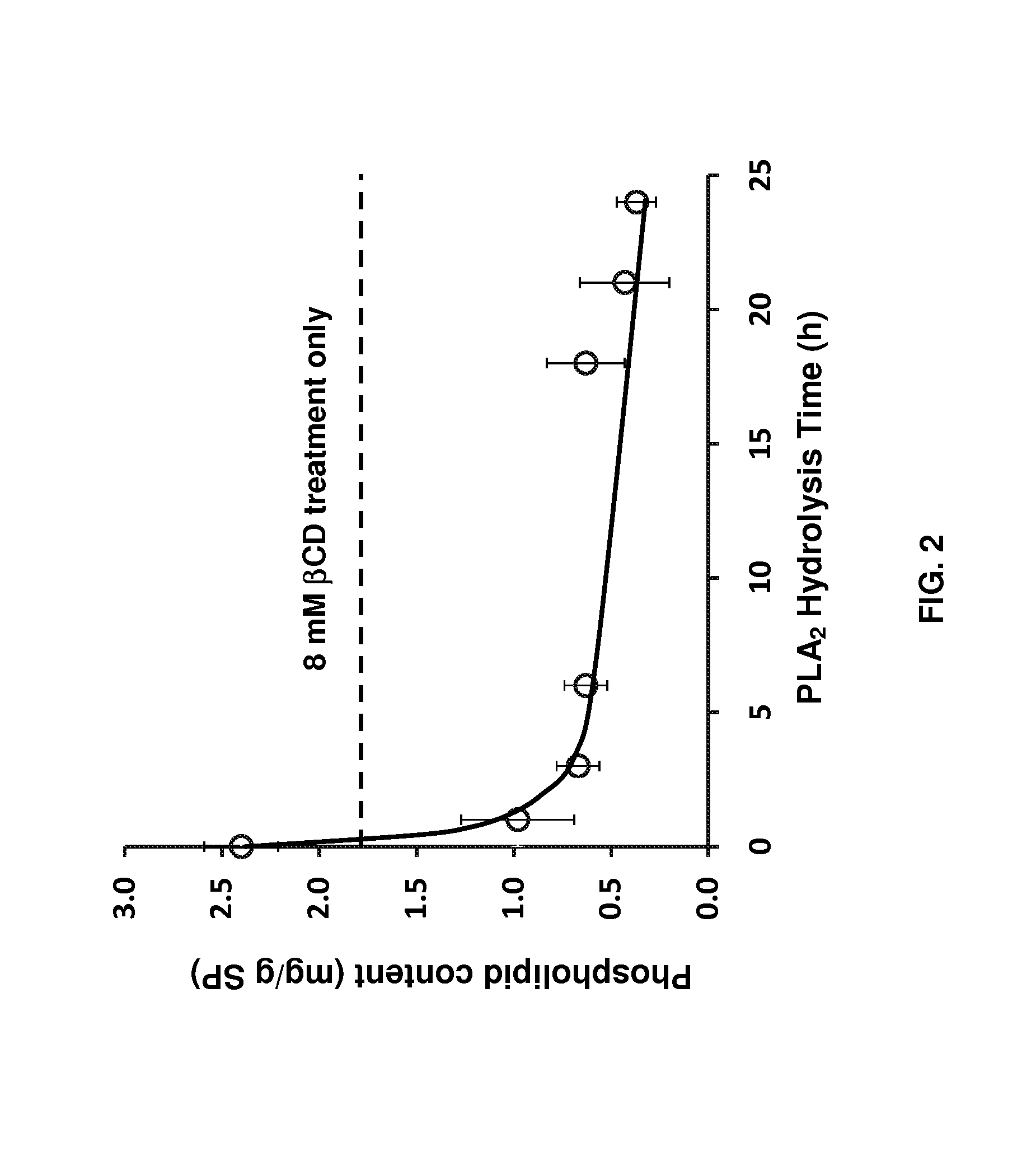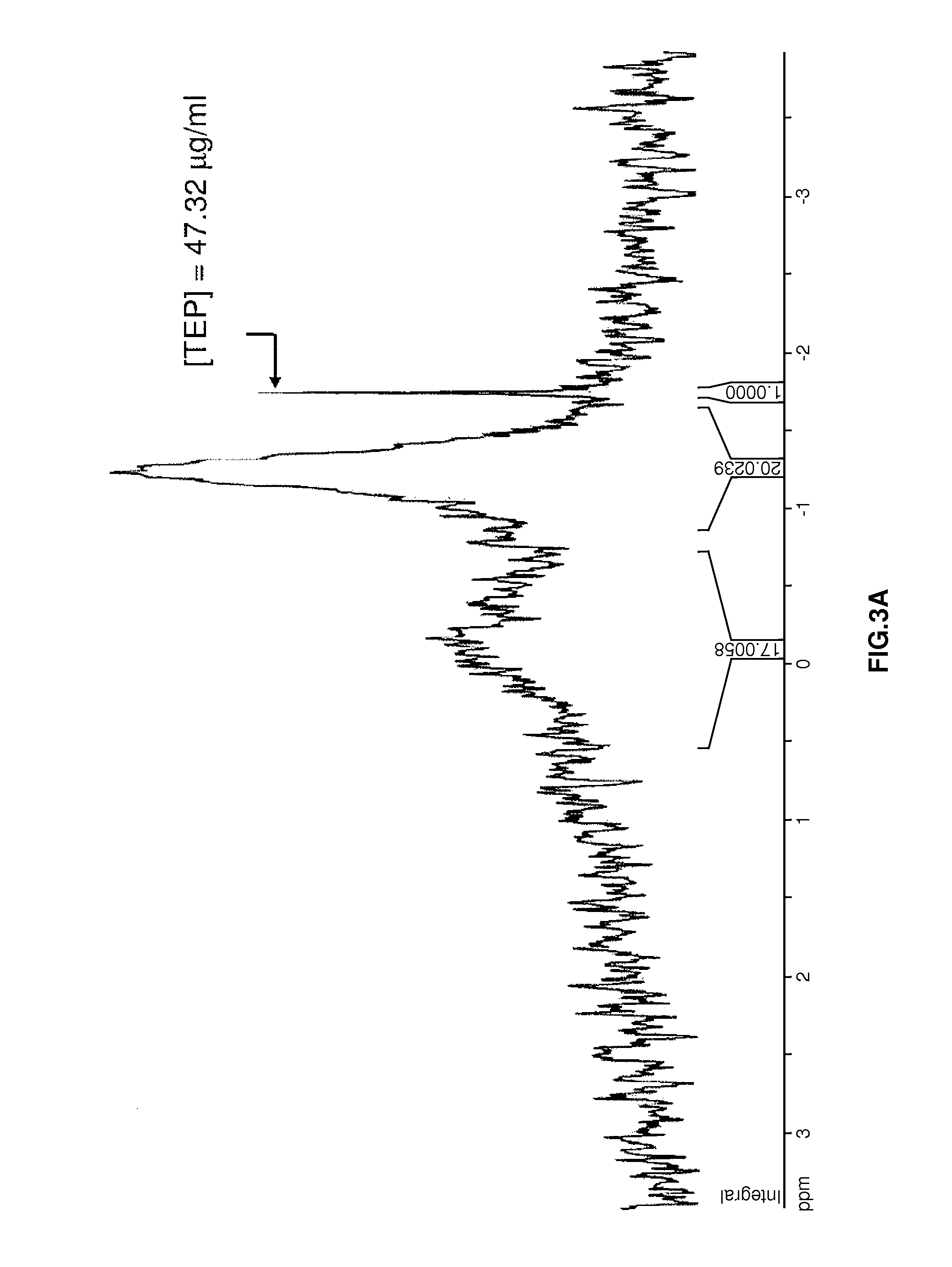Process for removing phospholipids and off-flavors from proteins and resulting protein product
a technology of protein and phospholipid, which is applied in the field of protein removal process, can solve the problems of protein denaturation, protein loss, and difficult removal of phospholipid from purified proteins, and achieve the effects of reducing phospholipids, reducing phospholipids, and excellent flavor stability
- Summary
- Abstract
- Description
- Claims
- Application Information
AI Technical Summary
Benefits of technology
Problems solved by technology
Method used
Image
Examples
examples
[0057]The following examples are provided solely to illustrate with greater clarity the method recited and claimed herein. The examples do not limit the scope of the method in any fashion. The examples specifically show the effect of sonication, phospholipase A2 digestion, and β-cyclodextrin treatment on phospholipid and free fatty acid removal. Other cyclodextrins and lipid hydrolases are predicted to have similar effects on removal of other off-flavor-causing compounds.
Materials and Methods
Reagents:
[0058]Soy protein was isolated from defatted soy flour (ADM Co., Decatur, Ill.) as previously described (Damodaran and Kinsella, 1981), but without using β-mercaptoethanol. Food grade β-cyclodextrin (“CAVITRON 82800”-brand) was donated by Cargill Inc. (Minneapolis, Minn.). Deuterated chloroform (d-CHCl3), triethyl phosphate (TEP), and phospholipase A2 from porcine pancreas with a stated activity of >10,000 units / ml were purchased from Sigma-Aldrich Corp. (St. Louis, Mo.). Fatty acids me...
PUM
| Property | Measurement | Unit |
|---|---|---|
| temperature | aaaaa | aaaaa |
| frequency | aaaaa | aaaaa |
| temperature | aaaaa | aaaaa |
Abstract
Description
Claims
Application Information
 Login to View More
Login to View More - R&D
- Intellectual Property
- Life Sciences
- Materials
- Tech Scout
- Unparalleled Data Quality
- Higher Quality Content
- 60% Fewer Hallucinations
Browse by: Latest US Patents, China's latest patents, Technical Efficacy Thesaurus, Application Domain, Technology Topic, Popular Technical Reports.
© 2025 PatSnap. All rights reserved.Legal|Privacy policy|Modern Slavery Act Transparency Statement|Sitemap|About US| Contact US: help@patsnap.com



